#community health
Text
AN OPEN LETTER to THE PRESIDENT & U.S. CONGRESS; STATE GOVERNORS & LEGISLATURES
Support Marijuana Decriminalization for a more Equitable USA
4 so far! Help us get to 5 signers!
I am writing to express my strong support for the decriminalization of marijuana at both the federal and state levels. The current approach to cannabis, rooted in policies dating back to 1971, requires urgent reconsideration given evolving social norms and scientific understanding.
The revelation by President Richard Nixon's domestic policy chief, John Ehrlichman, that the war on drugs was designed to target Black communities underscores the urgent need to rectify the injustices perpetuated by decades of punitive drug policies. The disproportionate impact of these policies on communities of color has fueled systemic inequities in our criminal justice system.
Decriminalization of marijuana would shift our focus from ineffective punitive measures to evidence-based public health strategies, emphasizing harm reduction and regulated use, whether medicinal or recreational. It's crucial to differentiate between decriminalization and unregulated use, prioritizing public health and equitable access.
I urge you to champion legislation that decriminalizes marijuana and addresses the racial disparities entrenched by outdated drug policies. By investing in research and public health initiatives related to cannabis, we can develop policies that protect public health while respecting individual freedoms.
In conclusion, federal and state-level decriminalization of marijuana is imperative to rectify the failures of past policies and promote equitable, evidence-based drug reform. I urge you to seize this opportunity to advance sensible, ethical drug policy reforms that reflect our evolving understanding of cannabis regulation.
Thank you for considering my perspective on this critical matter. I look forward to your leadership in championing meaningful drug policy reform.
📱 Text SIGN PWUITK to 50409
🤯 Liked it? Text FOLLOW IVYPETITIONS to 50409
💘 Q'u lach' shughu deshni da.
🏹 "What I say is true" in Dena'ina Qenaga
#IVYPETITIONS#PWUITK#resistbot#petition#anti racism#racial justice#Marijuana Decriminalization#Cannabis Reform#Drug Policy#Social Justice#Equity#Legalize It#Public Health#Criminal Justice Reform#Racial Justice#Civil Rights#Drug Law Reform#Decriminalize Marijuana#Justice Reform#Drug Policy Reform#End Mass Incarceration#Policy Change#Advocacy#Community Health#Health Equity#Legalization#Racial Equality#Social Change#Drug Reform#Human Rights
7 notes
·
View notes
Text

#life expectancy#healthcare disparities#Black doctors#primary care#racial disparities#healthcare access#racial health disparities#healthcare equity#access to healthcare#minority representation#healthcare workforce#community health#social determinants of health
5 notes
·
View notes
Text
Healing Arts Workshop Communal Healing through Music and Dance

View On WordPress
#african dance#african inspired movements#arts in medicine#california#community building#community healing#community healing through dance#community health#Culture#dance#diaspora#emotional health#empowerment#exercise#healing#healing dance#healing through dance#healing through movement#healing through music#Health#health and wellness#healthy#mental health#mindfulness#move#movement#nursing#public health#RICHER Model#self healing through dance
9 notes
·
View notes
Text
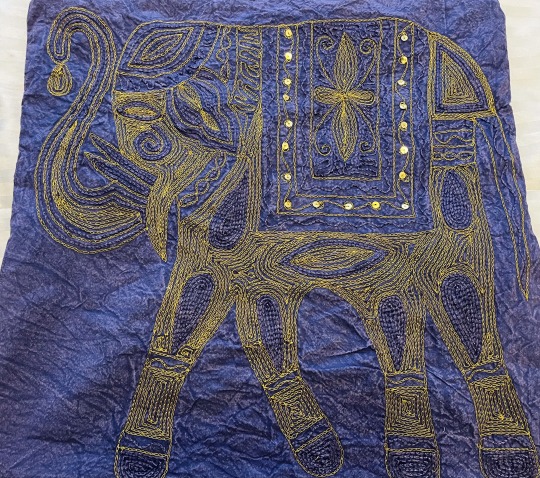
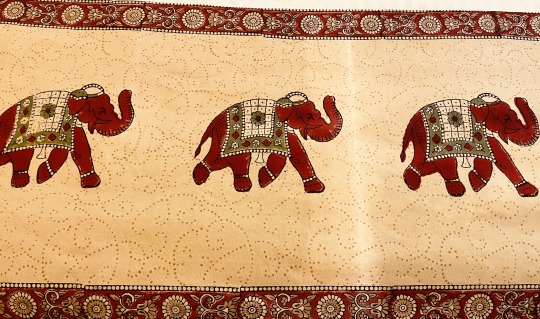
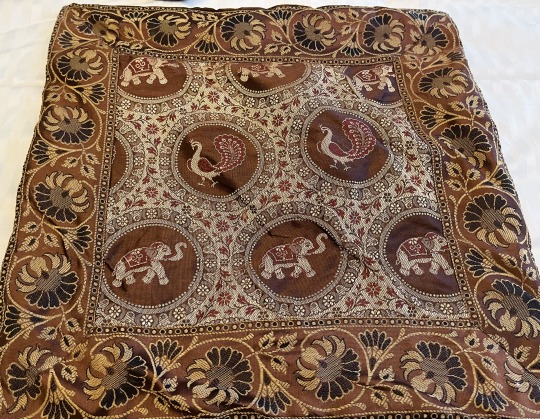
Spirit Animals by Zeni
"My grandmother's from India. Part of my grandfather's family is from Persia. From a very young age, I saw some very beautiful objects and items in their home, that a lot of people may not have been exposed to. My grandmother and grandfather always had peacocks. Their blend of Indian and Persian had so many things in their home like cushion covers with both elephants and peacocks embroidered on them. There's definitely a desire in us to see the world."
This week for "Cooking Up Feminism" at Scarborough Arts, workshop participant, Zeni brought some wonderful, hand embroidered and block printed textiles to share with our group. I noticed a recurring theme of elephants in the designs of the fabrics, which made me very happy, because elephants are my spirit animals. They are majestic, gentle yet fierce, protective of their herd, and have their large feet firmly planted on the ground.
"First of all, I just wanted to share why elephants are so special to me," Zeni said, as we circulated through the unique fabrics. "Elephants are special to me, because in my opinion, they are like human beings. They go through a lot of things. They survive. And they still care for their upcoming generations.
When my grandson was born, I created a book titled Little One, You are the Universe. It centres around elephants and all of the text and illustrations are mine." Zeni (Workshop Participant, Cooking Up Feminism)
All of the recipes and stories we share in "Cooking Up Feminism" will be published in a unique cookbook by Scarborough Arts, available to the public in 2023, so stay tuned. Bookmark our blog and follow along. Thank you for your support.
~Mariam Magsi (Workshop Facilitator, Scarborough Arts)
#Cooking Up Feminism#Scarborough Arts#Healthy Arts for Seniors#elephants#spirit animals#strength#courage#life#animal inspiration#show and tell#community#friendship#scarborough#canada#BIPOC#seniors#community health#mariammagsi#storytelling
2 notes
·
View notes
Text
"We have really been welcomed even more than originally thought,” Bediako said.
Numbers provided by the Community Safety Department, which oversees the program, show the unarmed responders went to 199 calls from June 28-Aug. 30. The CRT dispatches an unarmed three-person group of first responders to non-violent behavioral health and quality of life calls for service.
Prior to the program’s launch, some community members were worried about the responders' safety.
The data shows they reported feeling safe 100% of the time. As of Tuesday, the HEART team has never needed police backup for safety.
Smith said his department has a strong collaboration with the Durham Police Department. He also said he’s gotten calls from cities like Austin, Texas; Seattle and Winston-Salem, wanting to learn more about Durham’s program.
...
"To see the team that we’re building here, to hear them talk about the calls, yeah, I’m a believer,” Smith said.
3 notes
·
View notes
Text
Week 3- Art And My Major
For this week's art activity we had to focus on an activity that went hand in hand with our major. In my case, I had to focus on how art and community health could correlate. As I was researching, I came across lots of murals and paintings that depicted community health and wellness but I wanted to do something different. This led me to realize that art does not have to be singular, regarding only drawing and painting, but instead I can focus on different structures of art.
Last semester I took an art class that revolved around focusing on art outside of the United States and I chose Mexico City. In my research, I came across an artist by the name of Pedro Reyes. He had an inspiring take on art. The piece or exhibition that he created was called "People's United Nation" or pUN for short. This artistic expression welcomed 193 regular citizens from their respected countries and throughout a few weekends, the delegates get to represent their countries in group activities. Essentially this event allows the delegates to speak on current or possible future issues that can occur in their country and in the groups the other delegates can help with coming up with solutions.
The art activity for this week can be either small and possible to complete in a week or large and takes more than a week to complete. So taking inspiration from Pedro Reyes's event, I would like to do something similar on a smaller scale but would take more than a week to accomplish. I have two possible scenarios, the first being an event where local schools decide on "student delegates" to represent their local communities. The second scenario is much larger in which the event would revolve around larger separate communities choosing local delegates, it could be local residents or someone in office, regardless of the scenario. The purpose would be to discuss the local disparities that affect the population of each respected community and come up with possible solutions. The difference would be that the school scenario would focus on the younger population and the community scenario would focus on the community as a whole. The event itself would only be one day.
This "activity" would take more than a week because of all the confirmation that must be met by multiple parties. Some approvals can take up to a month or longer to be confirmed. It would also require lots of resources such as a furnished venue to host the event, proposals to encourage discussion, willing delegates, approvals from parents and school boards if the first scenario is chosen, and information/data about each represented community so that accurate information will be discussed...etc. The research must be done to provide accurate proposals and information, meaning we would have to look into each community thoroughly. This art excursion would need many approvals and confirmation so depending on which scenario we would have to speak with multiple parties whether with the school district or the board of directors of a community. Because of the scale of this project, we would have problems in actually pulling it off. Getting willing delegates and approvals/ permission would also be an issue. Having inaccurate information/ misinformation could also hinder the reason for this event. To gauge the effectiveness of the event, a possible method would be pre/post tests of a community sample and see if there is a change from the solutions provided in the event if any. Time is a big issue here because the post-tests would have to be given at a proper time when enough time has passed to implement the solutions.
Overall, I believe that art and my major have a positive overlap. Not only by encouraging murals but also by possible events to discuss issues with communities and provide solutions for such issues. Together, my major and art can have a positive impact on a communities health and wellness by depicting positivity, support, and community encouragement.
3 notes
·
View notes
Text
“If you want to keep people away from drugs and drug-related crime, you have to have rewarding activities. It’s work. It’s okay. It’s an emphasis on the kinds of activities and relationships that people build their lives around. If we don’t do something to rebuild these communities, I don’t see this current drug configuration ebbing in the way that drug waves of the past historically have.”
Nancy D. Campbell, in Dopesick: Dealers, Doctors, and the Drug Company that Addicted America by Beth Macy
Part Three: “A Broken System”
Chapter Thirteen: Outcasts and Inroads
#nancy campbell#beth macy#dopesick#dealers doctors and the drug company that addicted america#a broken system#outcasts and inroads#addiction#public health#community health#sdoh#opioid epidemic
4 notes
·
View notes
Text
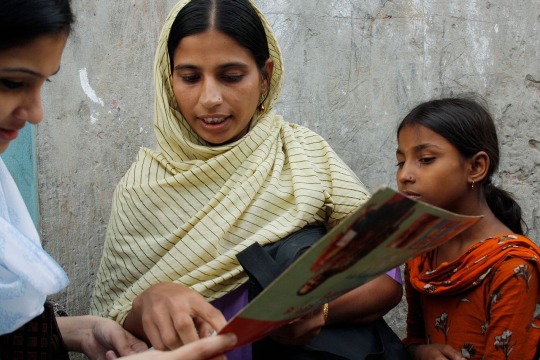
Public health
#public health#healt care workers#community health#korail basti#dhaka#bangladesh#medicine#wikipedia#wikipedia pictures
6 notes
·
View notes
Text
youtube
#youtube#militarytraining#Exercise Balikatan#2024#public health#community health#partnership#outreach#unity#military#US#Philippine#global#collaboration#aid#mission#medical#cooperation#teamwork#service#troops#humanitarian#assistance#Us & philippines to hold joint military drills
0 notes
Text
👨👩👧👦Out with Incest Laws: Reconsider Blood Quantum Laws in Native Reparations
An open letter to State Governors & Legislatures
1 so far! Help us get to 5 signers!
I am writing to express profound concerns about the continued reliance on Blood Quantum Laws, or Indian Blood Laws, in Native Reparations Programs. These laws, established by federal and state governments as far back as 1705, define Native American status based on fractions of Native American ancestry, perpetuating harmful consequences for tribal communities and some, alarmingly, terminating before just 5 generations.
The use of Blood Quantum Laws has led to detrimental effects on Native American families and communities. It has incentivized harmful family planning practices, compelling individuals to marry within close kin networks to maintain "pure bloodlines." This practice not only violates individual autonomy but also jeopardizes genetic diversity and the long-term viability of tribal populations.
Of utmost concern is the declining population within many tribal communities, with some nearing critical thresholds of fewer than 1000 individuals. This situation is further exacerbated by the principles of population biology, particularly the 50/500 rule, which underscores the need for a minimum population of 500 individuals to reduce genetic drift and ensure sustained viability. It is troubling to note that these laws inadvertently encourage cousin marriages, posing additional risks to community health and resilience.
Moreover, Blood Quantum Laws impose an arbitrary expiration date on government-funded reparations and jeopardize the cultural continuity of these communities. By tethering Native American status to ancestry thresholds, these laws undermine the diversity and autonomy of tribal enrollment criteria.
I urge policymakers to urgently reconsider the use of Blood Quantum Laws in Native Reparations Programs and advocate for a more inclusive and sustainable approach to reparations. This approach should prioritize the cultural and social integrity of Native American communities, safeguarding their continued existence and resilience for future generations.
Our villages were razed by colonizers, our ancestors were genocide survivors, and, as ever, our children bear the enduring impacts of historical injustices.
Thank you for considering these critical issues and taking decisive action to address them.
Source:
📱 Text SIGN PBDXGL to 50409
🤯 Liked it? Text FOLLOW IVYPETITIONS to 50409
#IVYPETITIONS#PBDXGL#resistbot#Blood Quantum#Native American#Reparations#Tribal Communities#Genetic Diversity#Indigenous Rights#Cultural Integrity#Population Biology#Government Policy#Historical Injustices#Tribal Enrollment#Ancestry Criteria#Native Identity#Kinship Networks#Genetic Drift#Tribal Sovereignty#Cousin Marriages#Diversity and Autonomy#Indigenous Heritage#Colonial History#Policy Reform#Social Justice#Human Rights#Cultural Survival#Community Health#Historical Trauma#Advocacy
2 notes
·
View notes
Text
Donating blood benefits the giver and the receiver of the blood.
#Blood Donation#Health Benefits#Community Health#Volunteering#Public Health#Wellness#Humanitarianism#Healthcare#Save Lives#Blood Drive#Donate Blood#Blood Donor#Health Awareness#Blood Transfusion#Healthy Living#Social Impact
0 notes
Text
all your stuffed animals love you. they're not sad if they're in a box, or on the floor, or not held/played with as much. they understand. they know that you might need another stuffie more, or that you don't have enough space. they're just happy to be with you, and if you ever give them away, they'll be happy there too. stuffies are for comfort. they understand. they love you too. it's okay.
#posic#posic+#posic community#stuffed animal#stuffed animals#stuffies#object sentience#mental health#neurodivergent#comfort#positive reminders#gentle reminder#gentle reminders#positivity#posi#inner child#autistic#schizospec#schizophrenic#neurodivergence#autism
65K notes
·
View notes
Text
A Healing Space For Healers

View On WordPress
#Africa#african dance#african inspired movements#Afro Pop#anxiety#Aotearoa#art#arts in medicine#california#community building#community healing#community healing through dance#community health#dance#dance therapy#depression#dialogue#diaspora#Djembe#drumming#egwu#emotional health#empowerment#exercise#fellowship#fitness#healing#healing dance#healing through dance#healing through music
7 notes
·
View notes
Text
When Words Won't Suffice
I was 25 when I began to believe that my life is worth protecting.
That was thanks to a Master in martial arts showing me, week after week after month after year, that I was worth all the thought, time and energy he put into training me (pro-bono), to defend myself.
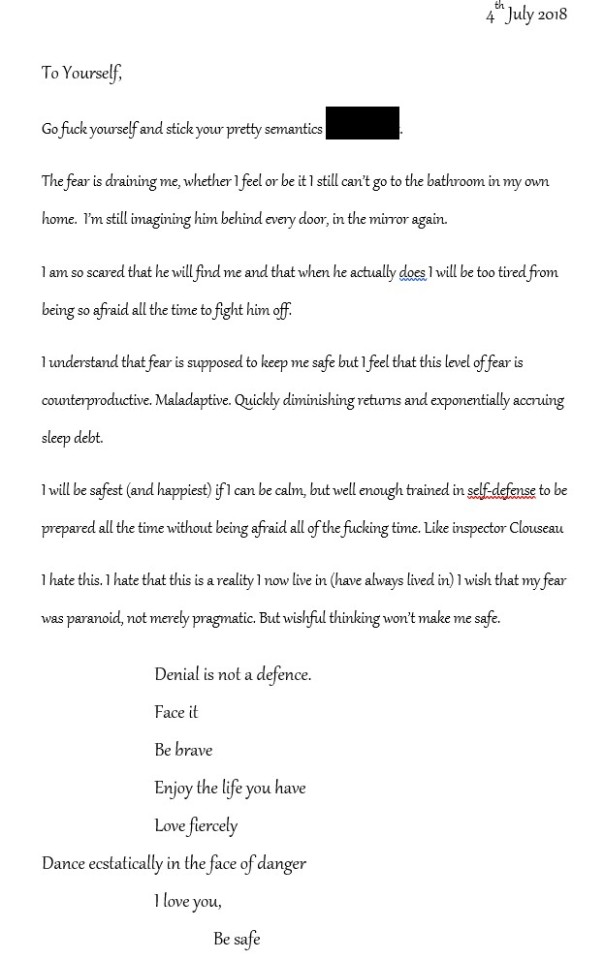
So long as our justice systems fail to hold perpetrators accountable, and our communities refuse to hear these 'unspeakable' crimes;
Where else are we to find safety beyond our own bodies?
#childhood trauma#cptsdsupport#cptsdwarrior#cptsdhealing#ptsd#selfdefense#self protection#safety#tw cptsd#tw ptsd#anger#struggle#stay safe#you are loved#you are worthy#justice system#community health#public health#support#problems#issues#importance#know your worth#defend yourself
3 notes
·
View notes
Text
Harnessing Data for Impact: The Role of a Community Health Worker
Within the field of today's healthcare, the Community Health Worker role has expanded beyond conventional bounds, becoming a crucial position that serves as a link between communities and healthcare systems. The power of data, a tool that, when used carefully, can change health outcomes, and give communities the ability to take control of their well-being, is at the center of this transformation.
The Foundation of Trust: Building Strong Community Connections
Building confidence in the neighborhood is the primary goal of a Community Health Worker. Through developing lasting relationships and being aware of each person's specific requirements, Community Health Workers become dependable partners in advancing health and well-being. The foundation for the efficient gathering and application of data is this trust.
Data Collection: A Gateway to Informed Decision-Making
Community Health Workers are frequently the first people that people seek out when they need medical attention. Through public interactions, community health workers collect essential data on common illnesses, health patterns, and community requirements. Healthcare professionals and lawmakers can customize measures to target community health issues thanks to the data, which forms the basis of their decision-making process.
Using Technology: Enhancing Data Collection & Analysis
Recent technological advancements have brought about a complete transformation in the healthcare industry's approach to gathering and analyzing data. Community Health Workers are using mobile apps and digital platforms more often to speed up data collection procedures. These tools improve the efficiency of data collection and enable real-time analysis, providing decision-makers with timely insights.
Empowering Communities: Using Data to Drive Change
The real power of data is found in its capacity to strengthen communities. Community Health Workers inspire and inform communities to take initiative-taking measures towards better health by communicating important health information and insights gained through data analysis. This empowerment encourages a sense of control over health outcomes, which results in long-lasting modifications to lifestyle and behavior.
Addressing Health Disparities: Targeted Interventions through Data
The data that Community Health Workers gather frequently shows glaring differences in health across communities. Empowered with this knowledge, Community Health Workers collaborate with elected officials and medical experts to execute focused interventions that address these inequalities. Regardless of the intervention's focus—boosting healthcare access or supporting healthy habits, for example—data-driven strategies are essential to reducing the disparity in health outcomes.
Monitoring & Evaluation: Tracking Progress for Continuous Improvement
A Community Health Worker’s responsibilities go beyond gathering data; they also involve keeping an eye on and assessing health initiatives. By keeping an eye on health outcomes and key performance indicators, Community Health Workers provide valuable feedback that directs programmatic adjustments and improvements. Data-driven decision-making follows a cycle that guarantees measures are both successful and sensitive to community needs.
In summary, there exists an innate relationship between the efficacy of data and the responsibilities of a community health worker. Community Health Workers enable communities to take charge of their health and enhance health outcomes by making effective use of data. As you move forward, the collaboration between Community Health Workers and data will continue to influence community health, bringing about positive change and changing lives.
0 notes
Text
The Pharmacy’s Crucial Role in Community Health

Pharmacies play a vital and dynamic role, beyond simply dispensing of medications. As accessible healthcare hubs, pharmacies, such as our pharmacy in South Richmond Hill, New York, are integral to fostering and maintaining the well-being of the communities they serve.
Learn More: https://www.zararxpharmacy.com/the-pharmacys-crucial-role-in-community-health/
0 notes